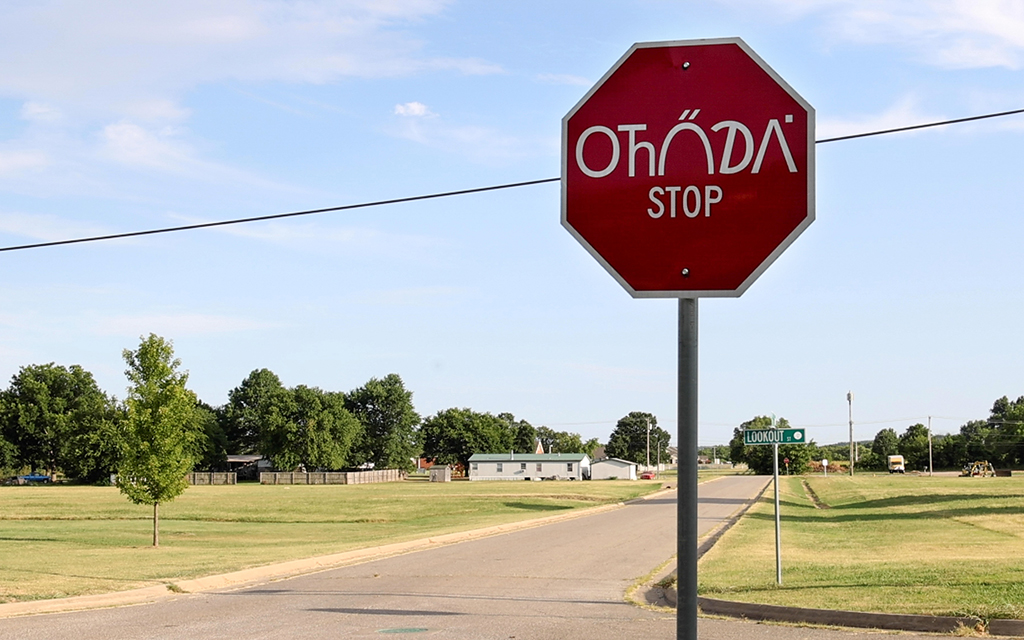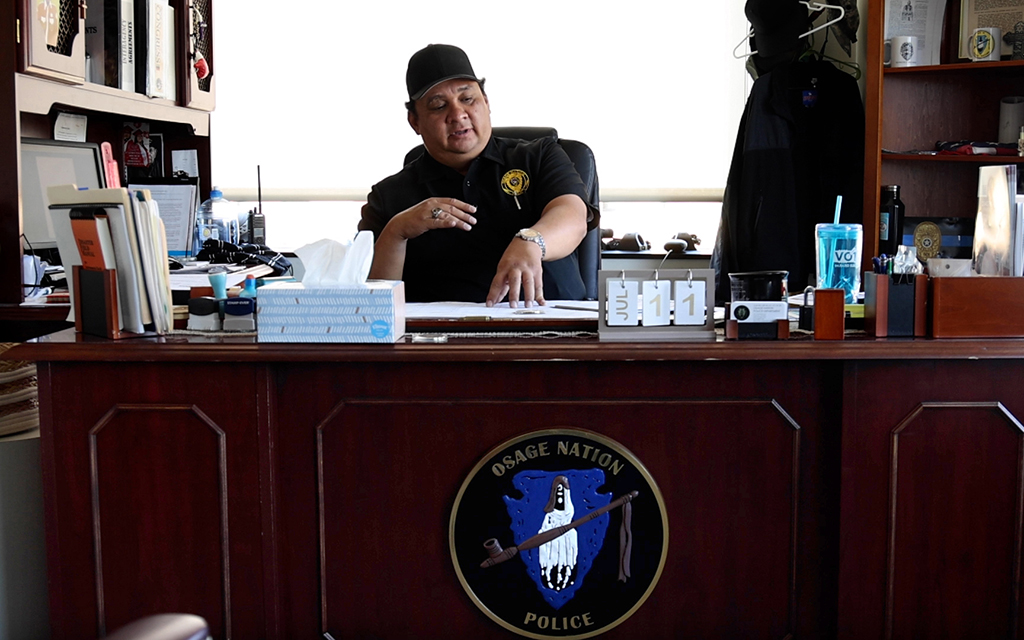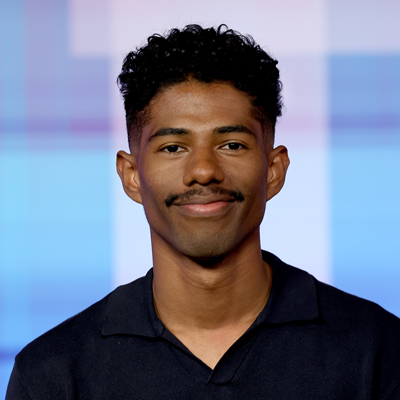
Police official: Identify issues early, before they ‘mushroom’ into excessive force
Sept. 26, 2022
Vernon Herron believes officer wellness and job performance go hand-in-hand.
As the director of officer safety and wellness for the Baltimore Police Department, Herron oversees two programs aimed at addressing officer mental health and monitoring red flags. Police departments across the country, he said, should implement such comprehensive support efforts.
“Identify issues early on in officers before they mushroom into an excessive force complaint or a deadly use of force that is not authorized,” Herron said.
Criminal justice experts agree that the mental health of police officers needs more attention. Law enforcement officers report higher rates of depression, anxiety, post-traumatic stress disorder and suicidal thoughts compared with the general population, according to the National Alliance on Mental Health.
Officers routinely respond to high-stress situations and face violence and tragedy.
“We make these officers centurions in that we put all this armor on them and we say, ‘Hey, you can protect the public, you’ve got a badge and you’re done,’” Herron said, “but we never tell them, ‘Hey you might be impacted emotionally or mentally as a result of what you’re doing to help us here.’”
Nick Williams, the police chief of the Osage Nation Police Department in Oklahoma, agreed that mental health has become a prevalent concern within law enforcement.
“We see a lot of the violence out there. We see the gore of it all,” he said. “That takes a toll on a person.”
Williams said he has faced traumatic incidents in his 16-year policing career. And he remembers the old-school approach to dealing with it.
“The old dog would be like, ‘You’ll be fine tomorrow. Just sleep on it. Everything’s going to work out – self-medicate. You’ll be fine,’” he said.
“No,” Williams said. That’s not the answer.
Williams said he was fortunate enough to have a preacher on the force at the time, and the preacher talked him through issues.
Heron said officers often face stigma about seeking help, and departments might not have the funds for wellness and mental health initiatives. But some law enforcement agencies across the country have taken steps to raise awareness and offer solutions. News21 took a look at a few programs:

Nick Williams, the police chief of the Osage Nation Police Department in Oklahoma, says he has witnessed traumatic incidents in his 16-year policing career. (Photo by Laura Bargfeld/News21)
Early intervention
Herron said Baltimore’s early invention program started after the “Gun Trace Task Force” police corruption scandal, a series of crimes in 2014 that later became the source for an HBO miniseries.
The department came under a federal consent decree, which required it to implement standards – some of them related to safety, wellness and early intervention.
“Early intervention is a series of alerts,” Herron said. They include violation of policy and complaints from residents or supervisors. Officers who get three alerts in a 12-month time period must meet with either their immediate supervisor or Herron’s team.
Often, he said, officers had other stressors in their lives.
“They were having domestic issues at home, financial issues,” Herron said. “They had been involved in critical incidents in the police department and never got counseling for it.”
That’s when officer safety and wellness come into play, he said. If an officer can’t focus on police work because of outside issues, the team and the officer’s supervisors need to find ways to manage it – but not in a punitive way. Herron said Baltimore police use his department as a conduit to get officers into health and wellness programs.
And the program works, he said, based on the decreasing number of officers in it since they started in 2018.
“When we first started this, we were averaging about 250 interventions a year,” Herron said. “And (now) I think we’re averaging about 60 interventions a year, and that means it’s working.”
Peer support
Herron also oversees Baltimore’s Peer Support Program, which has peer “mentors” – sworn and civilian employees who go through a three-day training session to help officers through counseling and discussion.
“A lot of them don’t have a squeaky clean past,” Herron said. “I mean, a lot of them have been suspended, a lot of them have been alcoholics – but we want those types of employees.”
Why? They can better connect with other officers facing similar issues.
Peer support members and mental health professionals also go to the scene of officer-involved shootings to provide resources to help the officer process the trauma. As of August, the department had 64 peer support members and seven full-time health and wellness staff.
Wellness apps
In August 2020, the Syracuse Police Department implemented Lexipol’s Cordico wellness solution – formerly known as CordicoShield, a digital platform that provides a wellness toolkit of articles, video modules and self-assessments.
Syracuse isn’t alone. First responders in Pittsburgh use the program, as do Idaho State Police. And the Spokane Valley Fire Department signed on in 2020.
The program offers a variety of tools, such as a PTSD self assessment, tips on how to handle night shifts and a therapist locator. The information is kept confidential.
The Syracuse Common Council approved $35,000 for the service, a cost council member Joe Driscoll said is justified.
When officers encounter traumatic situations and immediately pivot to the next call, Driscoll said, they’re unable to properly prepare for their work, decreasing the quality of policing and harming the officer’s own health.
“Providing them the mental health toolkit to kind of, as I said, decompress after a traumatic experience,” he said. “You know, I think that’s just essential to the other four or five interactions they’re going to have in the coming hours.”
In Syracuse, it’s unclear whether the program is working. Syracuse Police did not respond to a request seeking comment.
When asked whether they have evidence the app works, a spokesperson for Lexipol’s Cordico wellness solution said the app plays a role in officer morale and resilience. They hear repeatedly the app helps agencies support their officers “and address the root causes of high absenteeism, worker’s comp claims and more,” David Black, a clinical psychologist and president of Lexipol’s Cordico wellness solution, was quoted in an email.
However, the company doesn’t track usage because the app is confidential, and the company did not provide information on how it measures success.
Volunteer help
Phoenix police Sgt. Andy Williams said his department’s employee assistance unit provides support on the scene after critical incidents, serves as a safety net for officers in crisis and destigmatizes mental health among officers.
It provides services similar to those provided by departments across the country – including peer support and training officers in critical incident stress management.
Along with the unit’s six full-time detectives, the program uses chaplains.
The chaplains volunteer, Williams said, but the criteria to qualify is rigorous.
“Not everybody can be as devoted as we need them to be,” he said. “So right now, we really rely heavily on our main chaplain, Pastor Bob Fesmire.”
Williams said Fesmire has dedicated thousands of hours to Phoenix police and is at nearly every critical incident to help the officers process the trauma they’ve witnessed. Officers also seek out Fesmire when they need counseling, regardless of denomination, he said.
“We had an officer-involved shooting last night at 8 p.m., and he didn’t leave until the early hours of the morning,” Williams said, referring to an incident in late September. “He was out there all night standing by, talking to officers and just helping.
“He’s just an all-purpose great resource for the department, and he has a really unique perspective.”
Williams said the employee assistance unit responds to calls big or small, from officer-involved shootings to family counseling. Like other health and wellness units across the country, Phoenix logs incidents and counseling without identifying the officer.
“No names because our primary concern is protecting everyone’s confidentiality,” Williams said.
Williams said he doesn’t have a firm number of how many calls the team has received. He said he feels team members are doing an excellent job, but they’re always looking for new technology or “that next philosophy that’s on the cutting edge that’s effective, that’s going to help us, you know, be more effective in our mission, which is ensuring the holistic wellness of all of our employees.”
News21 reporter Chin Tung Tan contributed to this article. Nathan Collins is the Don Bolles/Arizona Republic fellow. Laura Bargfeld is a Hearst Foundation Fellow.
Come back on Oct. 3, when we start publishing the main News21 “In Pursuit” project.
Our content is free to use. If you want to republish this story, find our terms of use here and download the text story and assets.



